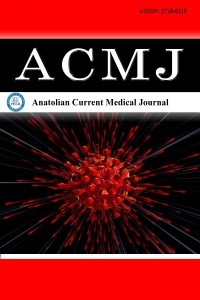1.
Al-Toma A, Volta U, Auricchio R, et al. European Society for the Study of Coeliac Disease (ESsCD) guideline for coeliac disease and other gluten-related disorders. United European Gastroenterol J. 2019;7(5):583-613. doi:10.1177/2050640619844125
2.
Fasano A, Berti I, Gerarduzzi T, et al. Prevalence of celiac disease in at-risk and not-at-risk groups in the United States: a large multicenter study. Arch Intern Med. 2003;163(3):286-292. doi: 10.1001/archinte.163.3.286
3.
Green PH, Cellier C. Celiac disease. N Engl J Med. 2007;357(17):1731-1743. doi:10.1056/NEJMra071600
4.
Rubio-Tapia A, Hill ID, Kelly CP, Calderwood AH, Murray JA; American College of Gastroenterology. ACG clinical guidelines: diagnosis and management of celiac disease. Am J Gastroenterol. 2013;108(5):656-576; quiz 677. doi:10.1038/ajg.2013.79
5.
Topol EJ. High-performance medicine: the convergence of human and artificial intelligence. Nat Med. 2019;25(1):44-56. doi:10.1038/s41591-018-0300-7
6.
Esteva A, Kuprel B, Novoa RA, et al. Dermatologist-level classification of skin cancer with deep neural networks. Nature. 2017;542(7639):115-118. doi:10.1038/nature21056
7.
Palanica A, Flaschner P, Thommandram A, Li M, Fossat Y. Physicians' perceptions of chatbots in health care: cross-sectional web-based survey. J Med Internet Res. 2019;21(4):e12887. doi:10.2196/12887
8.
Brown T, Mann B, Ryder N, et al. Language models are few-shot learners.arXiv preprint arXiv:2005.14165(2020).
9.
Jiang F, Jiang Y, Zhi H, et al. Artificial intelligence in healthcare: past, present and future. Stroke Vasc Neurol. 2017;2(4):230-243. doi:10.1136/svn-2017-000101
10.
Kerbage A, Kassab J, El Dahdah J, et al. Accuracy of ChatGPT in common gastrointestinal diseases: impact for patients and providers. Clin Gastroenterol Hepatol. 2024;22(6):1323-1325.e3. doi:10.1016/j.cgh. 2023.11.008
11.
Klang E, Sourosh A, Nadkarni GN, Sharif K, Lahat A. Evaluating the role of ChatGPT in gastroenterology: a comprehensive systematic review of applications, benefits, and limitations. Therap Adv Gastroenterol. 2023; 16:17562848231218618. doi:10.1177/17562848231218618
12.
Rubio-Tapia A, Hill ID, Semrad C, et al. American College of gastroenterology guidelines update: diagnosis and management of celiac disease. Am J Gastroenterol. 2023;118(1):59-76. doi:10.14309/ajg. 0000000000002075
13.
Uz C, Umay E. "Dr ChatGPT": is it a reliable and useful source for common rheumatic diseases? Int J Rheum Dis. 2023;26(7):1343-1349. doi:10.1111/1756-185X.14749
14.
Green PH, Cellier C. Celiac disease. N Engl J Med. 2007;357(17):1731-1743. doi:10.1056/NEJMra071600
15.
Topol EJ. High-performance medicine: the convergence of human and artificial intelligence. Nat Med. 2019;25(1):44-56. doi:10.1038/s41591-018-0300-7
16.
Esteva A, Kuprel B, Novoa RA, et al. Dermatologist-level classification of skin cancer with deep neural networks. Nature. 2017;542(7639):115-118. doi:10.1038/nature21056
17.
Bot B, Suver C, Niederhoffer K. The use of artificial intelligence in medical literature review: a novel approach to evidence-based medicine. Med Hypotheses. 2017;105:1-3. doi:10.1016/j.mehy.2017.05.015
18.
Jiang F, Jiang Y, Zhi H, et al. Artificial intelligence in healthcare: past, present and future. Stroke Vasc Neurol. 2017;2(4):230-243. doi:10.1136/svn-2017-000101
19.
Nuti SV, Wayda B, Ranasinghe I, et al. The use of google trends in health care research: a systematic review. PLoS One. 2014;9(10):e109583. doi:10. 1371/journal.pone.0109583

